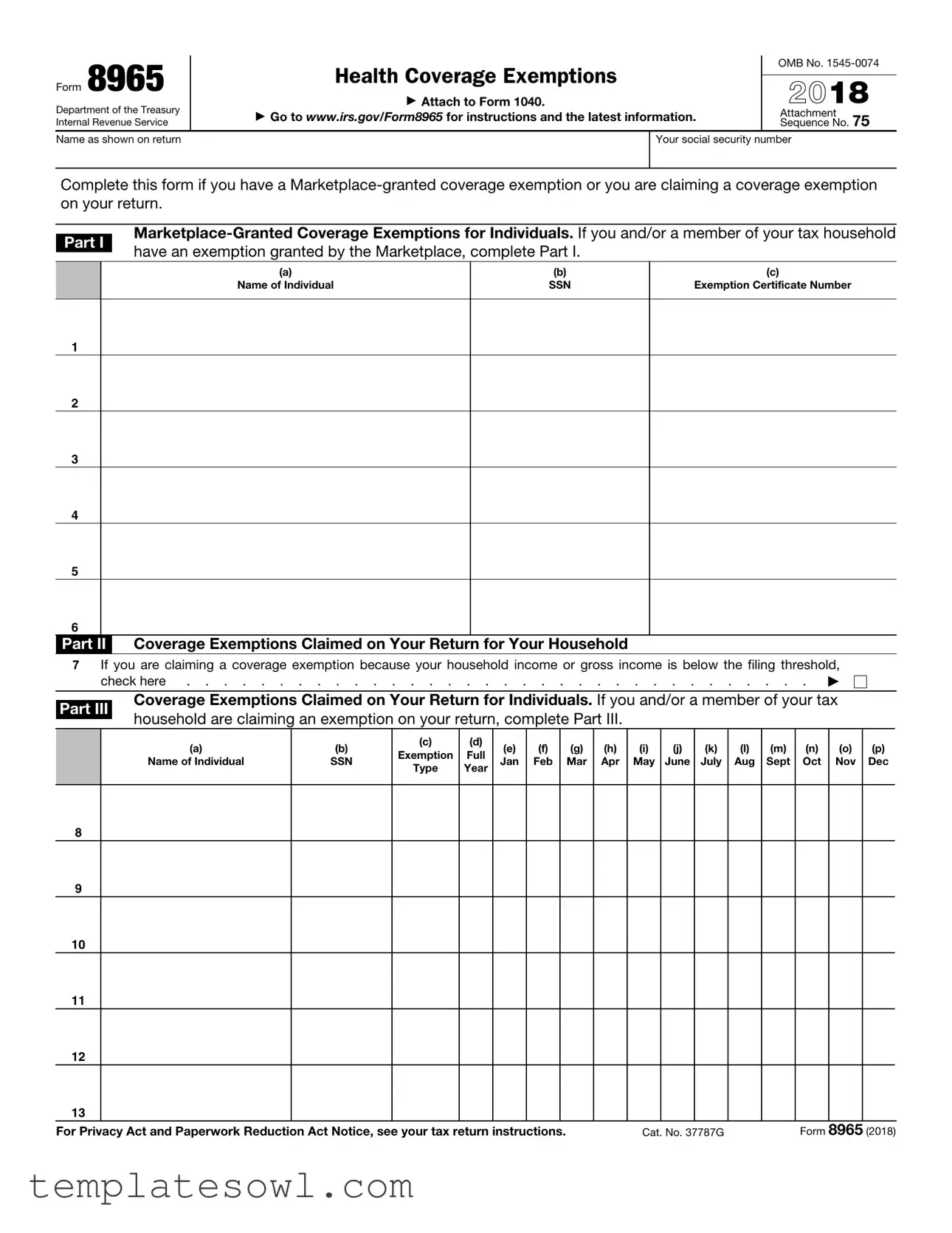What is IRS Form 8965?
IRS Form 8965 is used to claim a health coverage exemption. This form is essential for individuals who qualify for an exemption from the Affordable Care Act’s requirement to have health insurance. It should be attached to your Form 1040 when you file your federal tax return.
Who needs to fill out Form 8965?
You need to complete Form 8965 if you or any member of your tax household received an exemption granted by the Marketplace. Additionally, if you are claiming a coverage exemption directly on your tax return, this form is also required.
What exemptions can be claimed on Form 8965?
There are several exemptions that can be claimed using Form 8965. These include situations where your household income is below the filing threshold, a coverage exemption granted by the Marketplace, or other specific circumstances, such as being homeless or having a short-term health insurance policy.
How do I complete Form 8965?
Form 8965 consists of several parts. Part I is for those with Marketplace-granted exemptions. You will need to list the names, social security numbers, and certificate numbers for individuals granted exemptions. Part II is for claiming exemptions based on household income. Part III is where you’ll enter details for any additional exemptions claimed on your return.
What information do I need to provide in Part I?
In Part I, you are required to provide your name, social security number, and the names, social security numbers, and exemption certificate numbers of any individuals in your tax household who received a Marketplace-granted exemption.
What if my household income is below the filing threshold?
If your gross income is below the required filing threshold, you should check the corresponding box in Part II of Form 8965. You won’t need to provide additional details, but this declaration is essential to qualify for the exemption.
Can I file Form 8965 online?
Yes, you can file Form 8965 online if you are using tax software or working with a tax preparer. Most online filing options will include built-in prompts to assist you in completing the form as part of your overall tax return process.
Where can I find instructions for filling out Form 8965?
Instructions for completing Form 8965 can be found on the IRS website. Visit www.irs.gov/Form8965 for the latest updates and detailed guidance on each section of the form.
What happens if I don’t file Form 8965 when required?
If you are required to file Form 8965 but do not do so, you may face penalties. Additionally, the IRS may assess that you owe a Shared Responsibility Payment for not having health insurance coverage, unless you qualify for another exemption.

